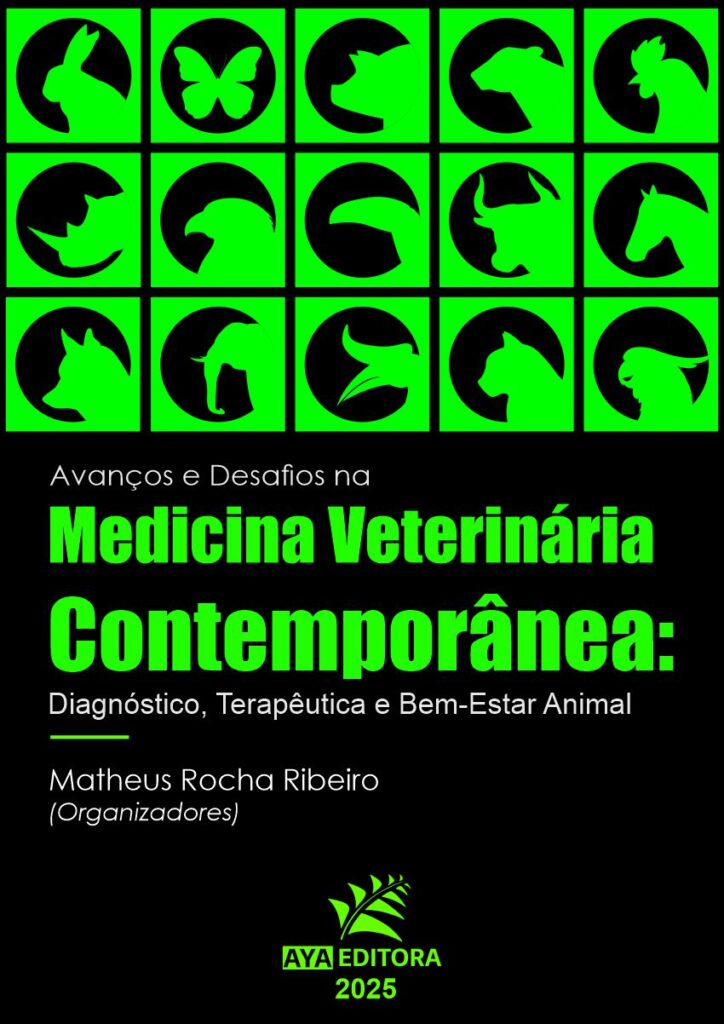
Ozonioterapia na Prevenção e Terapêutica de Mastite em Vacas Leiteiras
Prevention and Treatment of Mastitis With Ozone Therapy in Dairy Cows
Autores:
Ana Beatriz Perez Silva
Melina Marie Yasuoka
ISBN (Livro):
978-65-5379-789-5
DOI (Livro):
10.47573/aya.5379.3.6
DOI (Capítulo):
10.47573/aya.5379.3.6.11
N° páginas:
Pages
Formato:
Livro Digital (PDF)
Publicado em:
23/09/2025
Licença:
Resumo
A mastite também conhecida como mamite, é um processo inflamatório da glândula mamária que provoca alterações no tecido glandular e mudanças físico-químicas no leite, podendo ser causada por bactérias, fungos ou leveduras. É uma afecção comum na produção leiteira com potencial para trazer perdas econômicas significativas. Existem as mastites clínicas, subclínicas, ambientais e contagiosas, onde os grupos de bactérias estafilococos e estreptococos são os encontrados com maior frequência. Como métodos diagnósticos, temos o teste da caneca telada, o CCS (Contagem de Células Somáticas), o CMT (California Mastitis Test) e o WMT (Wisconsin Mastitis Test). A adoção de boas práticas na linha de ordenha, como o pré-dipping, o pós-dipping adequados, cuidados de higiene pessoal dos ordenhadores, manter animais em pé após a ordenha, contribuem positivamente na saúde do rebanho, saúde pública e aumento da produtividade. É indispensável que os produtores e profissionais estejam atentos, em especial a mastite subclínica que fica invisível no rebanho e não muda as características aparentes do leite, como cor e viscosidade, mas reduz a qualidade e a produção dos animais. Dentre os vários tratamentos, a ozonioterapia vem sendo explorada cada dia mais com ótimos resultados. O ozônio é um gás formado por três átomos de oxigênio, apresenta uma série de benefícios, curativos, preventivos e imunoestimuladores, devido às suas propriedades oxigenadoras, catalíticas e germicidas, capaz de agir contra bactérias, fungos e vírus. Este estudo é uma revisão da bibliografia realizada com o objetivo de compilar e analisar as informações existentes sobre a utilização do ozônio na prevenção e tratamento da mastite em vacas leiteiras, para assim conhecer os fundamentos da utilização do ozônio na pecuária e o potencial desse tratamento pode enfrentar a batalha contra a resistência microbiana que está se tornando mais forte nas últimas décadas.
Palavras-chave: afecção; mamite; ozônio; saúde pública.
Abstract
Mastitis, also known as udder inflammation, is an inflammatory process of the mammary gland that causes changes in glandular tissue and physical-chemical changes in milk. It can be caused by bacteria, fungi, or yeast. It is a common condition in dairy production with the potential to cause significant economic losses. There are clinical, subclinical, environmental, and contagious forms of mastitis, with staphylococcus and streptococcus bacteria being the most commonly found. Diagnostic methods include the screen cup test, SCC (somatic cell count), CMT (California Mastitis Test), and WMT (Wisconsin Mastitis Test). The adoption of good practices in the milking line, such as proper pre-dipping and post-dipping, personal hygiene care for milkers, and keeping animals standing after milking, contribute positively to herd health, public health, and increased productivity. It is essential that producers and professionals be vigilant, especially regarding subclinical mastitis, which is invisible in the herd and does not change the apparent characteristics of milk, such as color and viscosity, but reduces the quality and production of the animals. Among the various treatments, ozone therapy is being explored more and more with excellent results. Ozone is a gas formed by three oxygen atoms and has a number of benefits, including healing, preventive, and immunostimulant properties, due to its oxygenating, catalytic, and germicidal properties, capable of acting against bacteria, fungi, and viruses. This article is a review of the literature carried out with the objective of compiling and analyzing the existing information on the use of ozone in the prevention and treatment of mastitis in dairy cows, in order to understand the fundamentals of the use of ozone in livestock farming and the potential of this treatment to face the battle against microbial resistance that has become stronger in recent decades.
Keywords: disease; mastitis; ozone; public health.
Ler On-line

